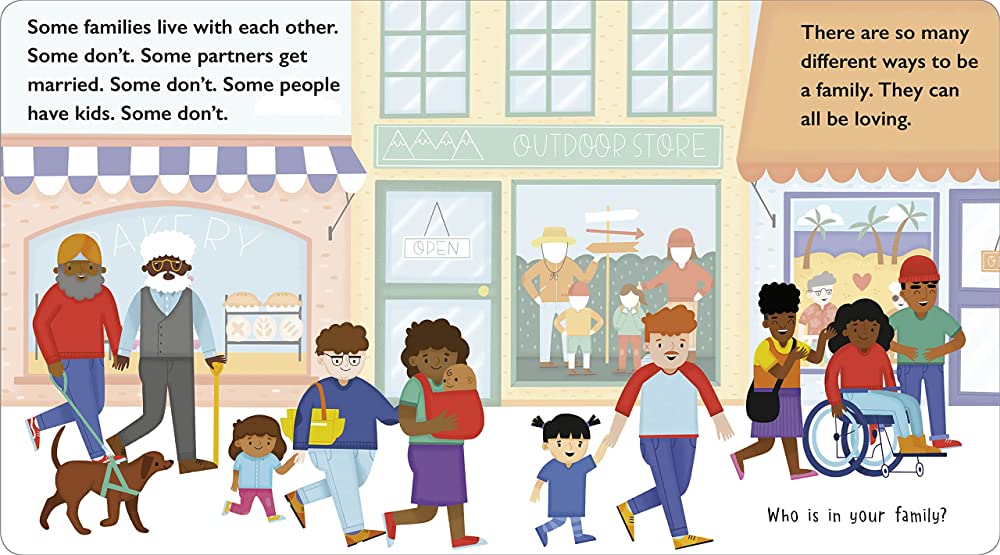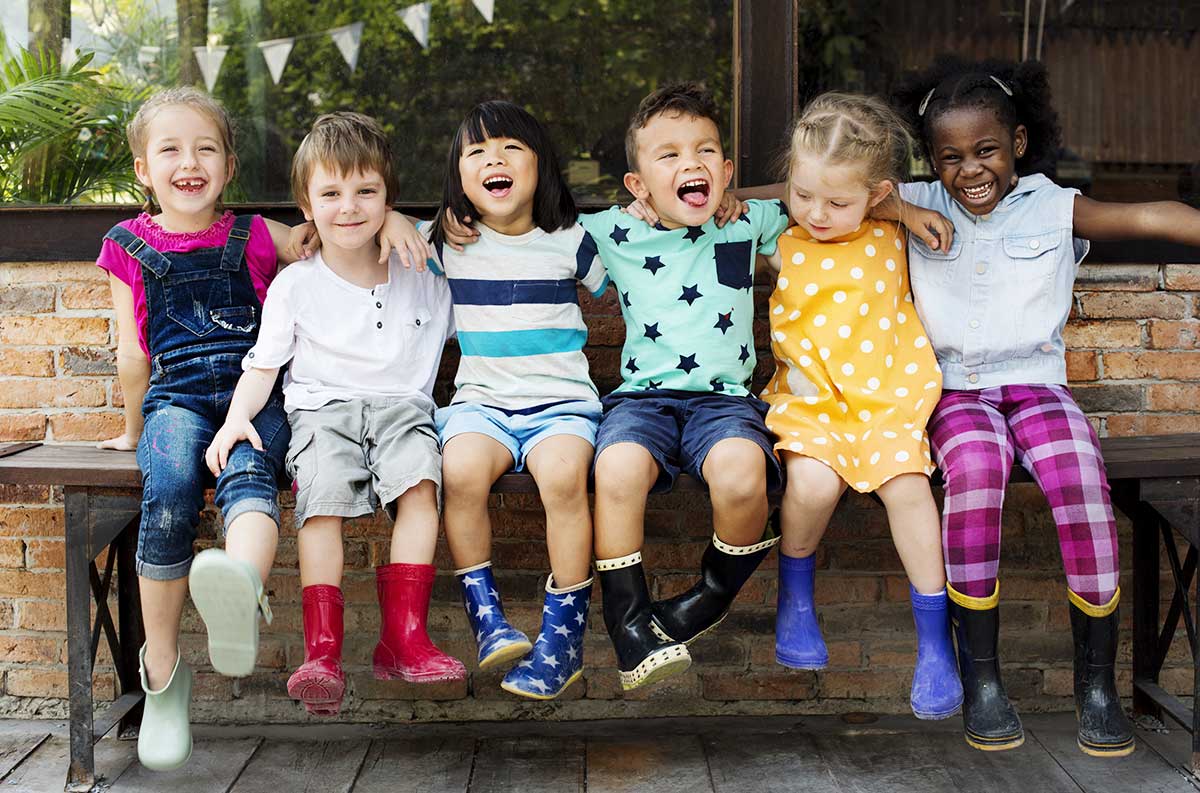
Inclusive Children's Book Teaching Guide
Together: A First Conversation About Love
What is this book about?
Research shows that talking about issues like love, relationships and families with children as young as age two helps them understand what they see, increases their self-awareness and self-esteem, and enables them to recognize and confront discrimination and prejudice.
Together: A First Conversation About Love begins the conversation about love with a supportive approach that considers both the child and the adult.
Developed by early childhood experts and justice activists, this topic-driven board book offers clear, concrete language and beautiful imagery that young children can grasp and adults can leverage for further discussion.
This beginner’s exploration of love, relationships and families is part of the First Conversations board book series, which helps adults broach important topics with young children in an informed, safe and supported way.
Who is depicted in this book?
- LGBTQ+ led families
- Children or adults who are/may be LGBTQ+
- Children or adults who transcend gender stereotypes
- People with intersectional identities (race/ethnicity, diverse abilities)
What early childhood themes and concepts does this book explore?
- Different ways that children and adults express love and happiness
- Types of love (self-love, how we show love to others, romantic love between adults, loving someone far away)
- Diversity of family structures with a uniting theme of love
- Participating in a variety of activities with loved ones (play, picnic, dancing, sharing treats)
- Ways in which people who love each other disagree
- Some children do not feel safe or loved in their families
How does this book support anti-bias education?
Together: A First Conversation About Love can be used to affirm different types of love and relationships (e.g., lesbian, gay, straight) and give children the vocabulary they need to accurately describe human differences.
The book can also be used to spark conversations about injustice (such as someone saying that only a certain type of family or love is okay) and help lay the foundation for young children to form deep, caring connections across all dimensions of human diversity.
A "Continue the Conversation" section at the end of the book contains additional content for teachers.
Depending on how the book is shared or used—and the developmental level of the children—the images and text may be used to support the following core goals from the book, Anti-Bias Education for Young Children and Ourselves:
Identity—Teachers will nurture each child’s construction of knowledgeable and confident personal and social identities so that children will demonstrate self-awareness, confidence, family pride, and positive social identities.
Diversity—Teachers will promote each child’s comfortable, empathetic interactions with people from diverse backgrounds so that children will express comfort and joy with human diversity, use accurate language for human differences, and form deep, caring connections across all dimensions of human diversity.
Justice—Teachers will foster each child’s capacity to critically identify bias and nurture each child’s empathy for the hurt that bias causes so that children will increasingly recognize unfairness (injustice), have the vocabulary they need to describe unfairness, and understand that unfairness hurts.
How can this book be used to meet early childhood learning standards?
For all ages
Use Together: A First Conversation About Love to meet early childhood literacy standards >
For children from birth to age three
Teaching suggestion: Point out familiar people and relationships depicted in the book and model their names.
What Illinois Early Learning Guideline does this meet for children from birth to age three?
Developmental DomainLanguage Development, Communication and Literacy
Standard: Receptive CommunicationChildren demonstrate the ability to comprehend both verbal and nonverbal communication.
Indicators for children:
- Understands approximately 100 words relevant to life experiences and cultural context (7–18 months)
- Recognizes and demonstrates an understanding of familiar pictures, people and objects, such as saying “mama” while pointing at mother (16–24 months)
- Responds verbally and/or nonverbally to comments or questions while engaged in conversations with both peers and adults (21–36 months)
Teaching suggestion: Point out familiar objects and routines. Point to or name things that the children love in the book or in their environment.
What Illinois Early Learning Guideline does this meet for children from birth to age three?
Developmental DomainCognitive Development
Standard: Concept DevelopmentChildren demonstrate the ability to connect pieces of information in understanding objects, ideas and relationships.
Indicators for children:
- Begins to identify and name objects and people (16–24 months)
- Begins to identify characteristics of the object, such as “red ball” (16–24 months)
- Identifies characteristics of objects and people when named, such as colors (21–36 months)
Teaching suggestion: Point out and model ways that people show love to one another (e.g., hugs, cradling/cuddling a baby, holding hands, helping when someone is hurt or upset, eating/playing together).
What Illinois Early Learning Guideline does this meet for children from birth to age three?
Developmental DomainSelf-Regulation
Standard: Emotional RegulationChildren demonstrate the emerging ability to identify and manage the expression of emotion in accordance with social and cultural contexts.
Indicators for children:
- Seeks out caregiver through physical actions (7–18 months)
- Seeks caregiver support when feeling overwhelmed by emotion (21–36 months)
For preschoolers (ages three to five)
Teaching suggestion: Use the review questions in the book to stimulate discussions with the children. Ask questions such as: "Who is in your family? How can we make life more fair for all families?"
What Illinois Early Learning and Development Standards does this meet for preschoolers?
Language Arts Standard2BRecognize key ideas and details in stories.
Benchmark 2.B.ECa:
With teacher assistance, ask and answer questions about books read aloud.
Teaching suggestion: Use examples from the book to explore different kinds of relationships, what they have in common, and what makes them unique. Make observations such as: "In any relationship, we might get upset or disagree. Friendship love and adult love/marriage/parenting are different."
What Illinois Early Learning and Development Standards does this meet for preschoolers?
Social Studies Standard18BDevelop an awareness of self within the context of family.
Benchmark 18.B.ECa:
Understand that each of us belongs to a family and recognize that families vary.
See inside this book.

What other resources are available?
Visit the First Conversations website for adult-oriented descriptions of inclusive topics from Together: A First Conversation About Love.
